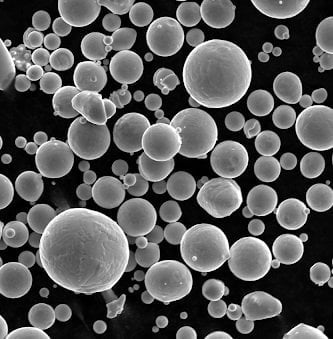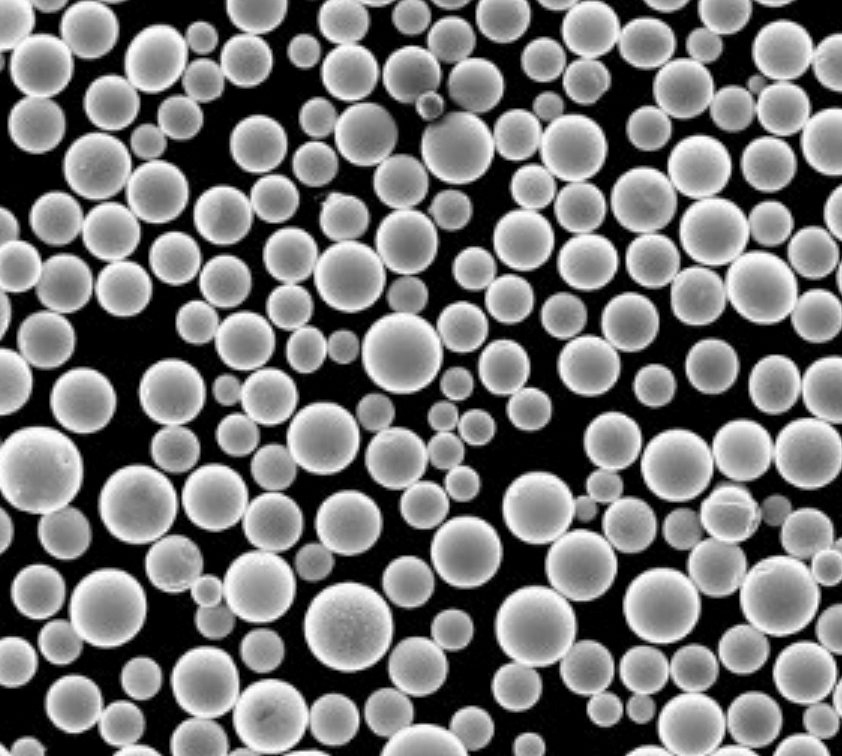Laser Metal Deposition (LMD)
Table of Contents
Overview of Laser Metal Deposition (LMD)
Laser Metal Deposition (LMD) is a cutting-edge additive manufacturing process that utilizes a high-powered laser to melt and deposit metal powder onto a substrate. This method is highly regarded for its precision, versatility, and efficiency in fabricating and repairing complex metal parts. LMD is often employed in industries such as aerospace, automotive, medical, and tooling due to its ability to produce high-quality, durable components with minimal material waste.
Types of Metal Powders Used in Laser Metal Deposition
One of the critical aspects of LMD is the choice of metal powder. The properties of the deposited layer depend significantly on the type of metal powder used. Below is a detailed table showcasing various metal powders, their composition, properties, and characteristics:
| Metal Powder | Composition | Properties | Characteristics |
|---|---|---|---|
| Inconel 625 | Nickel, Chromium, Molybdenum, Niobium | High corrosion resistance, excellent weldability | Ideal for marine and chemical processing applications |
| Titanium Ti-6Al-4V | Titanium, Aluminum, Vanadium | High strength-to-weight ratio, biocompatibility | Commonly used in aerospace and medical implants |
| Stainless Steel 316L | Iron, Chromium, Nickel, Molybdenum | Excellent corrosion resistance, good mechanical properties | Suitable for food processing, medical devices, and marine environments |
| Cobalt-Chromium Alloy | Cobalt, Chromium, Molybdenum | High wear and corrosion resistance | Used in medical implants and turbine engines |
| Aluminum AlSi10Mg | Aluminum, Silicon, Magnesium | Lightweight, good thermal conductivity | Often used in automotive and aerospace applications |
| Maraging Steel | Iron, Nickel, Cobalt, Molybdenum | High strength, toughness, and dimensional stability | Ideal for tooling and high-performance engineering components |
| Hastelloy X | Nickel, Chromium, Iron, Molybdenum | Excellent oxidation and high-temperature resistance | Used in gas turbine engines and chemical processing |
| Copper CuCrZr | Copper, Chromium, Zirconium | High thermal and electrical conductivity | Applied in electrical and heat exchanger components |
| Tungsten Carbide | Tungsten, Carbon | Extremely high hardness and wear resistance | Used for cutting tools and wear-resistant coatings |
| Nickel Alloy 718 | Nickel, Chromium, Iron, Niobium, Molybdenum | High strength, excellent fatigue and creep resistance at high temperatures | Utilized in aerospace, oil and gas, and power generation sectors |

Applications of Laser Metal Deposition
Laser Metal Deposition is versatile and finds applications in various industries. Here’s a table that outlines some of the key applications:
| Industry | Application | Description |
|---|---|---|
| Aerospace | Turbine blades, engine components | Precision and high-performance components for aircraft |
| Automotive | Engine parts, transmission components | Lightweight and durable parts for better fuel efficiency and performance |
| Medical | Orthopedic implants, dental prosthetics | Customized and biocompatible implants and devices |
| Tooling | Molds, dies, cutting tools | High-strength tools with intricate geometries |
| Oil & Gas | Drill bits, valves, and pipelines | Components that withstand high pressure and corrosive environments |
| Marine | Propellers, hull repairs | Corrosion-resistant parts for maritime applications |
| Power Generation | Turbine parts, nuclear components | High-temperature resistant and durable components |
| Defense | Armored vehicles, weapon systems | High-strength and lightweight components for military use |
| Electronics | Heat sinks, connectors | Components with excellent thermal and electrical conductivity |
| Art & Jewelry | Custom sculptures, intricate designs | Creative and precise metalworking for artistic purposes |
Specifications, Sizes, Grades, and Standards
When selecting metal powders for LMD, it’s essential to consider the specifications, sizes, grades, and standards to ensure the desired performance. The table below provides these details:
| Metal Powder | Sizes (µm) | Grades | Standards |
|---|---|---|---|
| Inconel 625 | 15-45, 45-105 | ASTM B443, AMS 5666 | ASTM F3055 |
| Titanium Ti-6Al-4V | 20-45, 45-90 | Grade 5, Grade 23 | ASTM F2924, AMS 4999 |
| Stainless Steel 316L | 15-45, 45-105 | AISI 316L | ASTM F138, AMS 5648 |
| Cobalt-Chromium Alloy | 20-53 | ASTM F75, ASTM F1537 | ISO 5832-4, ASTM F2979 |
| Aluminum AlSi10Mg | 20-63 | AlSi10Mg | ASTM F3318 |
| Maraging Steel | 15-53, 45-105 | 18Ni (300), Maraging 300 | AMS 6521, ASTM A538 |
| Hastelloy X | 15-45, 45-105 | UNS N06002 | ASTM B435, AMS 5754 |
| Copper CuCrZr | 20-63 | C18150, CuCr1Zr | ASTM B936, AMS 4597 |
| Tungsten Carbide | 15-53, 45-105 | WC-Co | ASTM B777 |
| Nickel Alloy 718 | 15-45, 45-105 | AMS 5662, AMS 5663 | ASTM F3055, AMS 5664 |
Suppliers and Pricing Details
The choice of supplier and pricing can significantly impact the cost-effectiveness and quality of the LMD process. Below is a table with some key suppliers and pricing details:
| Supplier | Metal Powder | Pricing (per kg) | Additional Notes |
|---|---|---|---|
| Carpenter Additive | Inconel 625 | $100 – $150 | High-quality nickel alloys with consistent properties |
| EOS GmbH | Titanium Ti-6Al-4V | $300 – $400 | Premium titanium powders for medical and aerospace uses |
| Höganäs AB | Stainless Steel 316L | $50 – $70 | Wide range of stainless steel powders for various applications |
| Sandvik Osprey | Cobalt-Chromium Alloy | $200 – $250 | Specialty alloys for high-performance applications |
| LPW Technology | Aluminum AlSi10Mg | $60 – $80 | Lightweight aluminum alloys for automotive and aerospace |
| Renishaw | Maraging Steel | $150 – $200 | High-strength steels for tooling and engineering components |
| Kennametal | Tungsten Carbide | $500 – $600 | Extremely durable powders for wear-resistant applications |
| VSMPO-AVISMA | Nickel Alloy 718 | $120 – $160 | High-performance nickel alloys for demanding environments |
| Oerlikon Metco | Hastelloy X | $250 – $300 | Specialty nickel alloys for high-temperature applications |
| Tekna | Copper CuCrZr | $70 – $90 | High-conductivity copper powders for electrical components |
Pros and Cons of Laser Metal Deposition
Understanding the advantages and limitations of LMD can help in making informed decisions. Here’s a comparison:
| Aspect | Advantages | Disadvantages |
|---|---|---|
| Precision | High accuracy and detail in complex geometries | Requires precise calibration and control |
| Material Efficiency | Minimal waste, efficient use of materials | Higher initial setup costs |
| Flexibility | Can use a wide range of metal powders | Limited by laser power and deposition rate |
| Repair Capability | Effective for repairing high-value components | Surface finish may require post-processing |
| Strength | Produces high-strength and durable parts | Potential for residual stresses and microcracks |
| Cost | Cost-effective for small production runs and custom parts | Not as economical for large-scale mass production |
| Environmental Impact | Reduced waste and energy consumption compared to traditional methods | Requires handling of fine metal powders, which can be hazardous |

FAQs
Which industries use LMD?
Industries such as aerospace, automotive, medical, tooling, oil and gas, marine, power generation, defense, electronics, and art and jewelry use LMD.
What are the benefits of LMD?
Benefits include high precision, material efficiency, flexibility in material choice, capability to repair parts, and the production of strong components.
What are common materials used in LMD?
Common materials include Inconel 625, Titanium Ti-6Al-4V, Stainless Steel 316L, Cobalt-Chromium Alloy, Aluminum AlSi10Mg, and Maraging Steel.
How does LMD compare to traditional methods?
LMD is more precise, material-efficient, and flexible but can have higher initial setup costs and may require post-processing for surface finish.
Is LMD environmentally friendly?
Yes, LMD is more environmentally friendly than traditional manufacturing methods due to reduced waste and energy consumption.
What are the challenges of LMD?
Challenges include precise calibration, handling fine metal powders, potential for residual stresses, and higher initial costs.
Can LMD be used for large-scale production?
LMD is more suited for small production runs, custom parts, and repairs, and may not be as economical for large-scale mass production.
What post-processing is needed for LMD parts?
Post-processing may include machining, heat treatment, and surface finishing to achieve the desired properties and surface quality.
Who are some suppliers of metal powders for LMD?
Suppliers include Carpenter Additive, EOS GmbH, Höganäs AB, Sandvik Osprey, LPW Technology, Renishaw, Kennametal, VSMPO-AVISMA, Oerlikon Metco, and Tekna.
Conclusion
Laser Metal Deposition represents a significant advancement in additive manufacturing, offering unparalleled precision, material efficiency, and versatility. By understanding the specific metal powders, applications, specifications, suppliers, and pros and cons, industries can leverage LMD to enhance their manufacturing capabilities and innovate in product development. Whether it’s producing high-performance aerospace components or custom medical implants, LMD is poised to play a crucial role in the future of manufacturing.
For further inquiries or detailed information about specific applications or metal powders, consulting with experts and suppliers can provide tailored solutions to meet your manufacturing needs.
Share On
MET3DP Technology Co., LTD is a leading provider of additive manufacturing solutions headquartered in Qingdao, China. Our company specializes in 3D printing equipment and high-performance metal powders for industrial applications.
Inquiry to get best price and customized Solution for your business!
Related Articles
About Met3DP
Recent Update
Our Product
CONTACT US
Any questions? Send us message now! We’ll serve your request with a whole team after receiving your message.

Metal Powders for 3D Printing and Additive Manufacturing
COMPANY
PRODUCT
cONTACT INFO
- Qingdao City, Shandong, China
- [email protected]
- [email protected]
- +86 19116340731

















